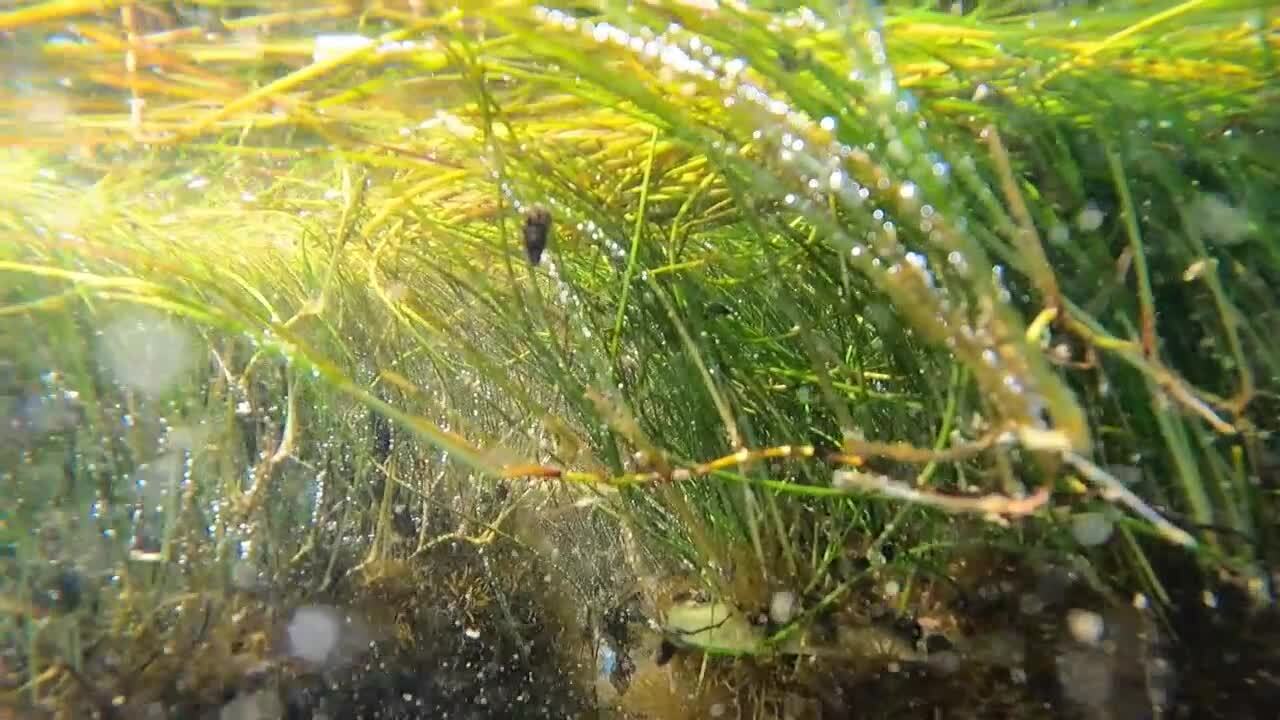STUART, Fla. — Dr. Lorae Simpson is the director of research and conservation efforts at the Florida Oceanographic Society on Hutchinson Island.
On the day WPTV met with her, she was looking in on the seagrass nursery.
Yes, seagrass, nurtured and grown for transplant into the St. Lucie Estuary and Indian River Lagoon.
"We weave it (seagrass) into burlap mats," Simpson said. "We take those mats, we place them in the lagoon and kind of stake them in, and then we let the seagrass do the rest of the job. It will root, establish and, hopefully, perpetuate the population."
The health of estuary and lagoon waters hinges on the health of seagrass. Make no mistake: The seagrass is on life support and has been for decades.
"Declines in salinity -- seagrass need salty water and, with a lot of freshwater discharges or inflows in the estuary, we are seeing the seagrass stress and eventually die."
Those discharges come east from Lake Okeechobee by way of canals built for flood protection. It is a flow, at times a flood, of freshwater never intended for a coastal estuary and lagoon system.
"These seagrasses, they are home to little invertebrates that the fish eat," Simpson said. "Those are the fish we enjoy going out and recreationally catching."

These days, Mark Perry, longtime executive director of the Florida Oceanographic Society, is cautious but hopeful. The Army Corps of Engineers has a plan on the table -- Plan CC it is called -- that would cut Lake Okeechobee discharges by up to 80%.
"We will take what we can get but want to fight for zero (discharges)," Perry said. "This estuary on this coast does not need any more discharges."
The Corps plan will come up for final signoff soon and congressional votes to make it law would happen next year.
Perry just hopes what is left here can survive and thrive if humans give nature one final chance to repair the damage. If not?
"People will not want to move here," Perry said. "They won't want to live here in this polluted water body that all of the sudden may look nice on the surface, but it's not going to produce the fish and shellfish, the total ecosystem and services it provides."




